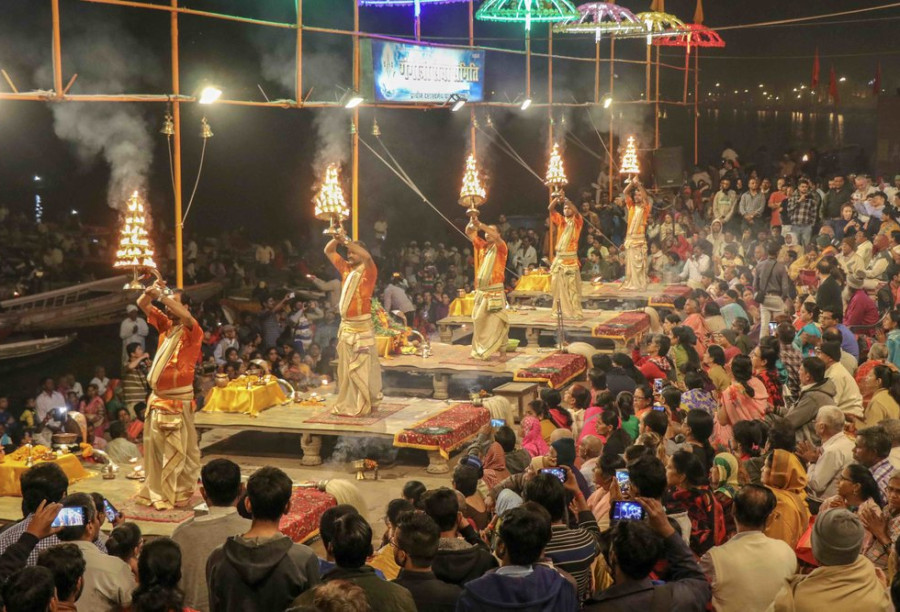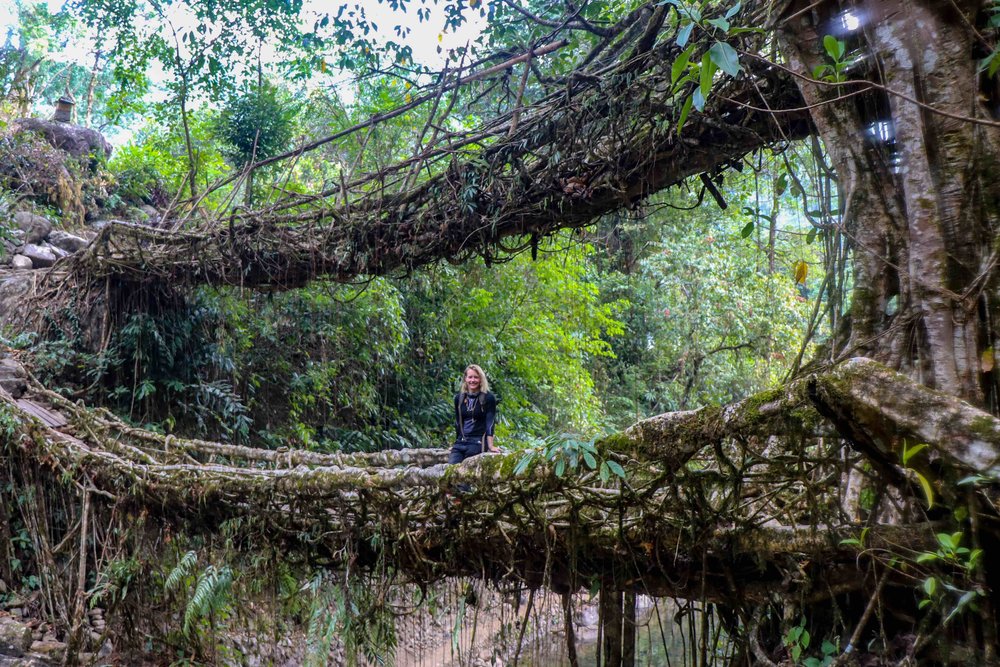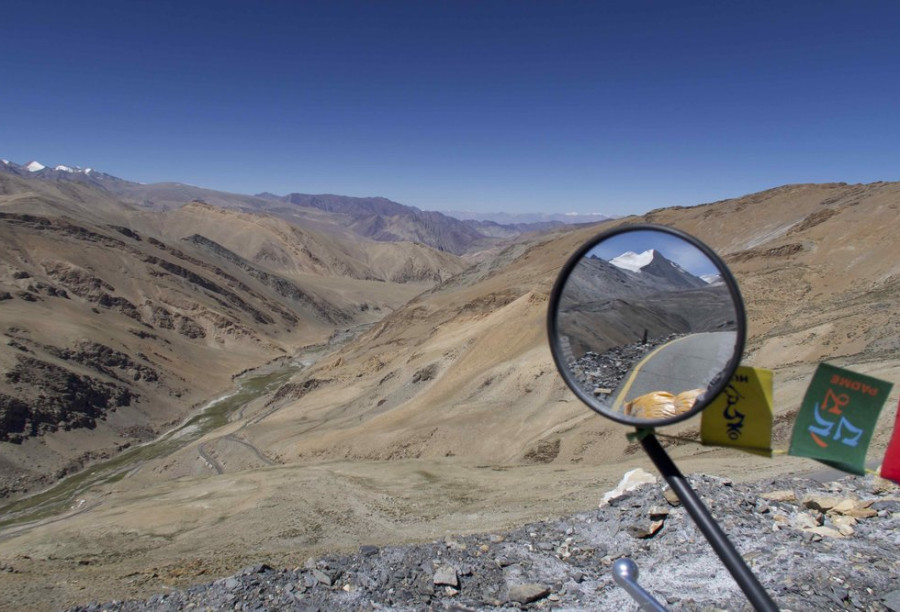
To Shillong for maintenance and a visit to the living bridges of Nongriat
21 December 2018I am one of those extremely stubborn solo travelers that wants to explore and find everything out by themselves. Why should I need a guide? But, when you are hiking through the jungle trying to find something incredible, it can be wise to use a guide. I learned this the hard way.
Bike love in Shillong and first travel mistake
After my night in the little treehouse in Tura, I needed to visit a slightly bigger town. It was time for an oil change and a new oil filter for Basanti. Even though I always carry2 liters of engine oil and some spare oil filters with me, I prefer to keep those for emergencies.
Additionally, my rear disc brake started to sound like a screaming pig whenever I used it. It was time to have my brake pads checked as well.
The most logical choice to give Basanti some love and attention was Shillong, a large hill station in Meghalaya. Chatting to the lovely owners of the treehouse, they pointed out a road to Shillong which was curvy and without traffic. In the video below you can see if they were right. Spoiler alert: they were not!
At the Royal Enfield workshop in Shillong, I arranged the oil change, a new oil filter, had the brake pads cleaned and Basanti was given a thorough wash afterward. We were both ready again for some new road adventures!
I decided to make a day-trip to Cherrapunjee first, about 60 kilometers south of Shillong. There was something incredible hidden in the jungle around there, it was worth to go there and check it out.
A guide? No thank you…
I first rode towards Cherrapunjee, and then took a narrow road to a tiny village called Nongriat. From here, the steep 2000 (!) step descent started. Some villagers asked me whether I wanted a guide. Of course not. I will find it myself!
Which I did, at least the first living root bridge. This was a single bridge, spanning a river gorge and entirely made out of living roots of the rubber fig tree. It was an amazing sight. But the real attraction in this jungle was a double-decker root bridge. So after crossing the first root bridge, I figured I just had to continue walking. I spotted a small but steep trail going up the mountain. This must be it, I thought. For more than an hour I climbed and climbed, sweated and sweated. The trail became narrower and heavier overgrown with each passing step.
Gigantic webs of yellow orb spiders were everywhere. Several times I came until an inch of walking right into one of those monsters. They are supposedly completely harmless creatures, but still, they are spiders! At some point, I realized this couldn't be the right way. Trekking all the way back wasn't a very appealing thought though. Luckily my scrambling through the bushes hadn't gone unnoticed. Suddenly I heard somebody calling me. Using some OEH-owl type of sound. I responded: “OEH!”. And then: “HELLO!” A few minutes later, the head of a local boy emerged from between some bamboo bushes. I was quite glad to see him and asked him: “Root bridge?” He nodded and signed for me to follow.
Some 10-minutes walking later and 180 degrees in the other direction, we got back at the official trail. I gave him a 100-rupee note which he accepted with a wide smile. Completely exhausted I finally reached the double-decker root bridge. And it was incredible!

Living root bridge
There are a dozen living bridges in this part of India made by the Khasia and Jaintia people. They figured out that by gently guiding the aerial roots of the rubber fig tree, they could create a bridge over streams.
With each passing year, the roots grew and became stronger until they could carry the weight of a person. Because they are a living and growing organism, the lifespan of these bridges are variable but are thought to last to up to 500 years!
There are a couple of double bridges with two parallel spans, but there is only one double-decker bridge in the world. It was worth the long hike on my not-so-comfortable motorbike boots.
Obviously, when I was admiring this incredible piece of architecture, I wasn't thinking about the way back which involved 2000 steps going up. It was an absolute killer and when I finally got back to Shillong, I was completely exhausted.
Hi Noraly,
Another thing aside the love for motorcycles/travels we share: not liking spiders! Hahaha.
That hike through the Indian jungle to the living bridges were another great example of your nature. It get’s you in some kind of troubles sometimes, but it sure makes up some very great campfire stories! That 2000 steps ascend though…… killing on the thighs with your motorpants and boots! Respect!

You still ended up paying someone for the directions to the ROOT BRIDGE. :-D

Spiders! yuk


